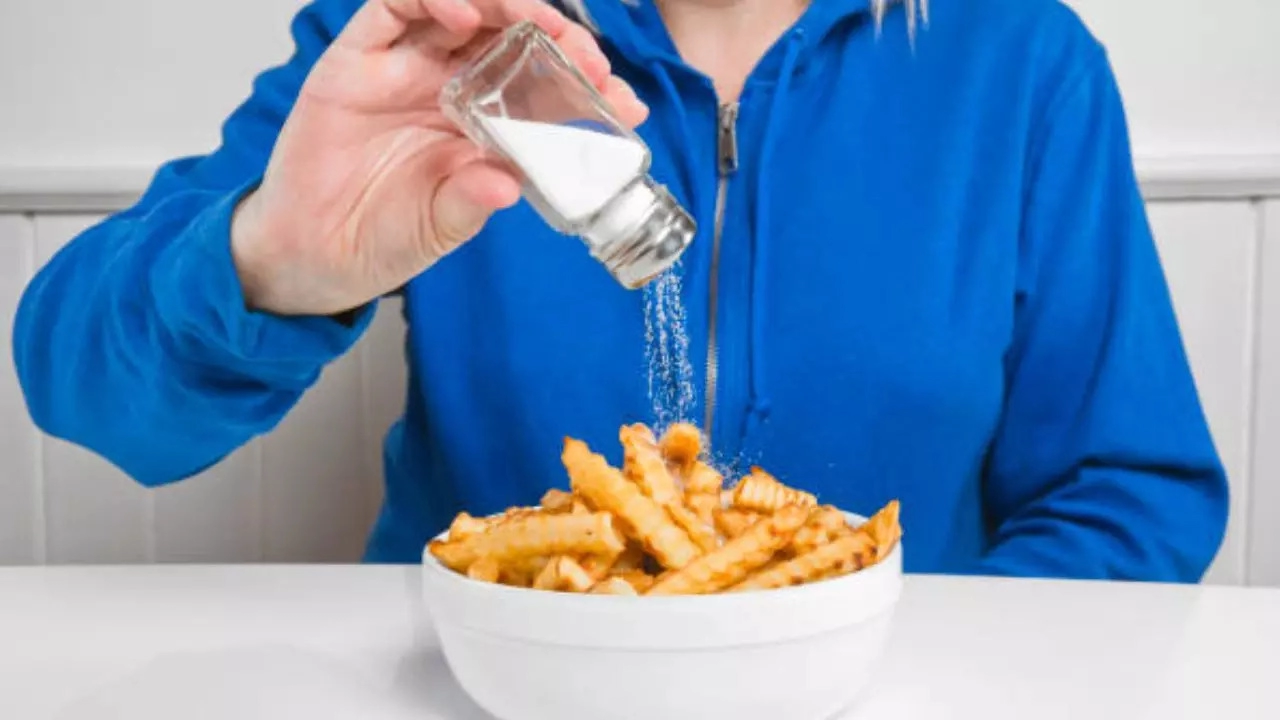Pallavi Mehra • 20 Oct 2024
FDA Aims To Reduce Sodium Intake For Americans: How To Cut Back On Salt For A Healthier Heart

FDA Aims To Reduce Sodium Intake For Americans: How To Cut Back On Salt For A Healthier Heart (Image Credits: iStock)
Sodium, commonly found in table salt, has long been recognized as a major culprit behind high blood pressure and an increased risk of heart disease. While many people may not realize it, the majority of sodium consumed comes from processed foods and restaurant meals rather than home-cooked food. According to the U.S. Food and Drug Administration (FDA), more than 70 per cent of the sodium in the average American’s diet comes from these sources. Recognizing this widespread issue, the FDA is working closely with the food industry to gradually lower sodium levels in many food products, making it easier for consumers to adopt healthier diets.
The current recommended daily sodium limit is 2,300 milligrams (mg) for people aged 14 and older, but Americans, on average, consume about 3,400 mg of sodium per day. This is more than 50 per cent of the recommended amount. This can lead to serious health consequences, including high blood pressure, heart disease, and stroke. Almost 90 per cent of Americans consume more sodium than they should, and nearly 50 per cent have high blood pressure as a result.
One of the major reasons is that excessive sodium intake begins at a young age. Children and adolescents are consuming foods high in sodium, and these unhealthy habits can carry into adulthood, contributing to long-term health issues. This is why the FDA's efforts to reduce sodium levels across a wide range of processed foods are so critical for public health.
Steps to Reduce Sodium in Your Diet
While the FDA works on these long-term industry changes, people can take immediate steps to reduce their sodium intake at home and when dining out. Here are some strategies:
Limit High-Sodium Foods: Certain foods are notorious for their high sodium content, such as deli meats, pizza, burritos, tacos, and many restaurant meals. When ordering at chain restaurants, ask for the nutritional information to make lower-sodium choices.
Compare Products: Not all similar foods contain the same levels of sodium. For example, different brands of bread can range from 200 mg to over 700 mg of sodium per 100 grams. Make it a habit to compare nutrition labels and opt for the lower-sodium option.
Understand Daily Values (DV): The Daily Value (DV) for sodium is a guide to help consumers stay within their recommended daily limits. Foods with 5 per cent DV or less of sodium per serving are considered low in sodium, while those with 20 per cent DV or more are high.
Experiment with No-Salt Seasoning: Flavour doesn’t have to come from salt. Try seasoning blends without salt or use herbs and spices to enhance the flavor of your meals without adding sodium.
Get Latest News Live on Times Now along with Breaking News and Top Headlines from Health and around the world.